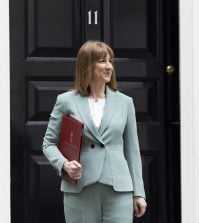Governments doing too little on gender diversity, report finds

A new survey reveals that very few public sector organisations have implemented specific programmes to propel women into leadership roles, despite widespread agreement that greater diversity in senior jobs strengthens policymaking, service delivery and recruitment.
Following a commission by auditing and consultancy giant EY, Global Government Forum interviewed 80 public sector leaders from 17 countries scattered across all five continents. While 96% of respondents said they believe that diversity of thought and experience is key to navigating changes in the public sector, 60% of them said that their own leadership teams are not diverse enough.
Less than half (49%) said their organisation is effective at identifying future female leaders, and just 14% said it has formal leadership programmes in place for women.
Drawing on the Senior Civil Service Women Leaders Index – another Global Government Forum research product – EY points out that women hold at least a third of all public sector leadership positions in only six countries: Canada (46%), Australia (40%), South Africa (40%), the UK (39%), Brazil (35%) and the US (34%).
“I don’t think anybody can be satisfied until they hit 50%,” said Una O’Brien, a former permanent secretary of the UK Department of Health quoted in the report. “We’ve had over 40 years of equal opportunities legislation and policy, and it continues to be a great frustration that we can’t get closer to 50%. We mustn’t feel complacent… We should keep asking why we have that gap.”
EY’s report identifies five barriers to greater gender diversity in the public sector.
The first is a reality disconnect: leaders assume gender inequality has almost disappeared, even though – according to World Economic Forum estimates – on the current trajectory it will take until the year 2186 to reach gender parity in both the private and public sectors.
Leaders therefore fail to take significant action: just 16% of respondents said they have targets for female representation on their board or senior management team, for example.
The second is the lack of reliable workforce data, with too many organisations failing to use appropriate metrics to track their progress on diversity. Just 23% of respondents say their company measures the proportion of female applicants for leadership positions.
Third, too many organisations fail to create a pipeline for female talent. The report lists some policies that can help, including internal mentoring programmes for women, appointing strong female role models, and unconscious-bias training for leadership teams.
The fourth barrier is the disconnect between how men and women view the gender diversity gap, with men far less likely to think that governments and public sectors need to do more to attract women (36% compared with 64% of women).
Some 40% of women consider lack of support from senior leadership to be a barrier to getting promoted. But others suggest that a lack of confidence amongst women may lie behind some of the problems. A federal ministry head from Germany is quoted in the report: “In particular with young female colleagues, I can tell that they don’t consider themselves ready for these positions as they are not confident enough. They don’t seem to have the guts to just go for those leadership positions, in contrast to their male counterparts. Female young colleagues are too restrained.”
Fifth, while different sectors agree on the value of diversity, they are making uneven progress towards gender parity.
The report concludes: “Closing the gender gap requires leaders from all sectors to step up and make hard-edged commitments, backed by meaningful and measurable actions, to deliver a legacy of a more diverse and inclusive workforce.”
George Atalla, EY’s global leader for its government and public sector group, said that the public sector needs to be able to draw on a diverse pool of talent in order to enhance its analysis and understanding of complex global issues.
“Accelerating achievement of gender parity facilitates improved productivity, engagement and decision-making,” he said. “It constitutes a vital part of the solution for the public sector to master change and to turn disruption into opportunities and growth on a global scale.”
For up to date government news and international best practice follow us on Twitter @globegov
See also:
Queen celebrates diversity with female civil service leaders
Former Canadian supreme court justice to lead on UN migration efforts





















In regard to women diversity in senior roles, confidence in ability or feelings of not being ready for top management is mentioned, well surely this is part of being ready for top management, you cannot thrust someone into a position of power when they have no confidence in their own ability, that is a recipe for economic and workplace disaster on a grand scale they would be eaten alive by more confident managers which would lessen their effectiveness and batter their confidence even more.
All the govenment needs to do is make a standerd wage. That can be increased in jobs of diferent skill. But… arent women under standerd anyway? Why do they need more money when the man of the household is making money?